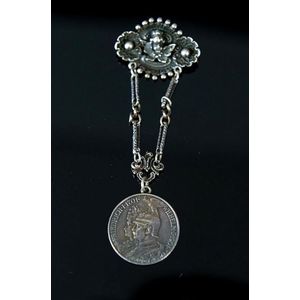Tibetan Nyingma School Gilt Bronze Nine-Prong Vajra
You must be a subscriber, and be logged in to view price and dealer details.
Subscribe Now to view actual auction price for this item
When you subscribe, you have the option of setting the currency in which to display prices to $Au, $US, $NZ or Stg.
- Bronze - An alloy of copper and tin, traditionally in the proportions of about 9 parts of copper to 1 part of tin.
The discovery of bronze in Western Asia in the 4th century enabled people to create metal objects which were superior to those previoulsy possible because of its strength and hardness, and it has been used throughout the world for weapons, coins, tools, statuary and other decorative items.
It is very fluid in a molten state, and its hardness, strength when set, and non-corrosive properties makes it most suitable for casting sculpture.
This item has been included into following indexes:
Visually similar items

A lapis lazuli pearl and rock crystal bracelet, the 18 baroque pearls spaced by four lapis lazuli beads, the largest supporting a tassel with silver mount, carved lapis bead drop and two rock crystal oval beads with fine veining.

A 9ct gold gemstone pendant, scrolling mount centring a peridot and a cultured pearl drop. Length 42 mm.

15ct gold filigree pendant with amethyst

German silver brooch with suspended coin. Cherub embossed brooch, with suspended 1901 German 2 mark coin. Wt.23g
